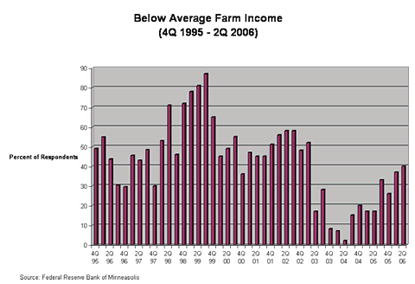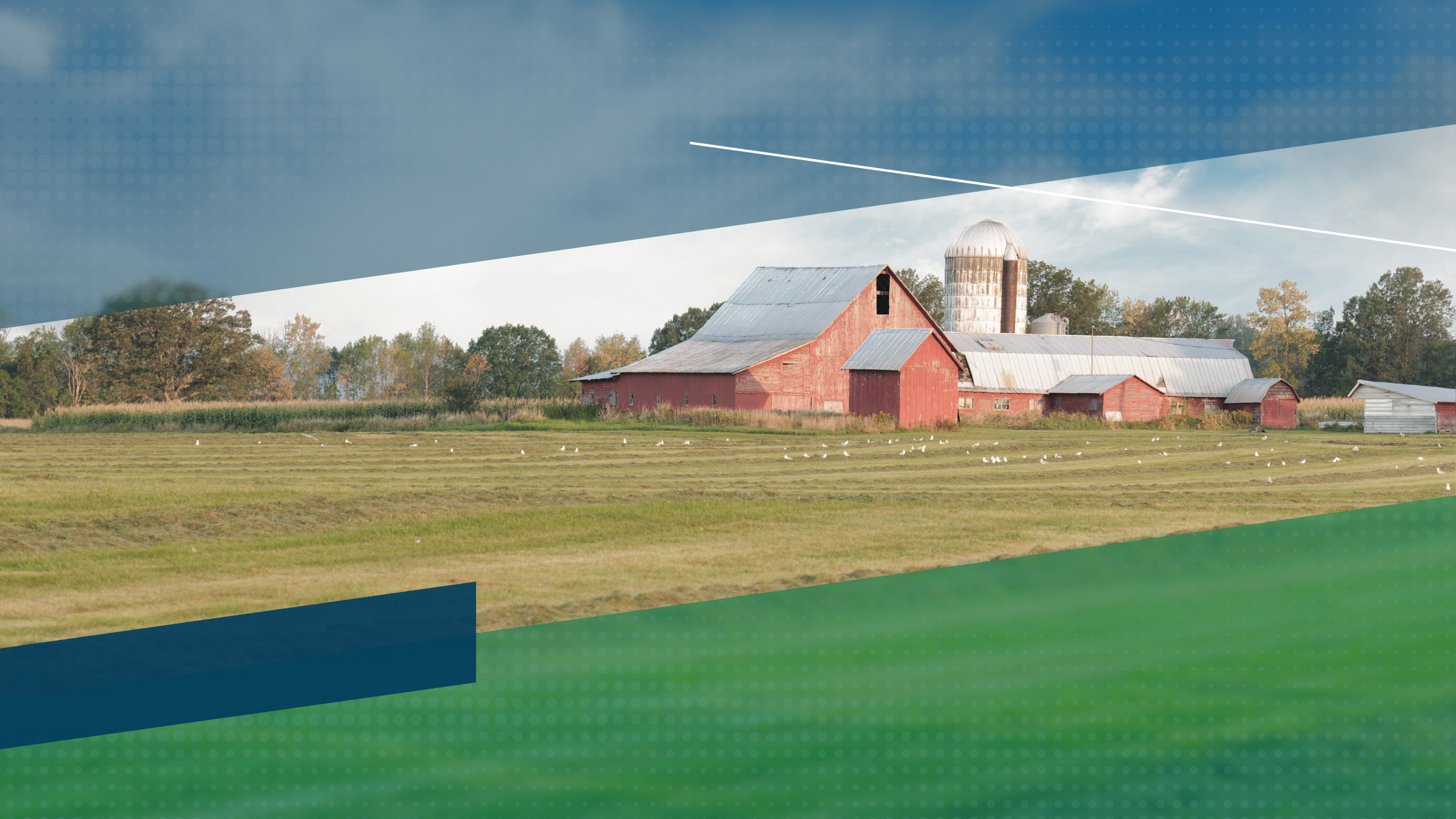“Input cost for farmers and ranchers is up dramatically for 2006,” commented a North Dakota lender in response to the Minneapolis Fed’s second-quarter (July 2006) agricultural credit conditions survey. Respondents indicated decreased farm income, increased household spending and mixed capital purchases. As a result, many farmers decreased the rate of loan repayment and extended loans. Even with higher interest rates, demand for loans increased. “It will only get worse,” commented a South Dakota lender. The outlook for the third quarter of 2006 is poor, as farmers look at lower yields due to drought conditions, and fuel, fertilizer and interest expenses increase.
Farm income, household spending and capital investment
Farm income slowed during the second quarter across most of the district. Only 13 percent of the lenders reported higher farm income, while 40 percent indicated lower income. Dry weather and higher input costs appear to be as the culprit. “High energy costs are starting to really cause difficulty,” reported a Minnesota lender. The results across the district are diverse. Lenders from Wisconsin are the most pessimistic, while almost half of the lenders from Montana reported increased profits. Despite lower farm income, increased household spending was reported by nearly a third of respondents. Meanwhile, capital spending is mixed, with 20 percent reporting increased capital spending and 27 percent reporting decreased capital spending. Half the respondents from Montana reported increases in capital spending, while 75 percent of Wisconsin respondents reported decreases.

Loan repayments and renewals
The increased input costs are making it tough for some agricultural producers to repay loans. Almost one in five lenders reported decreased rates of loan repayments and increased levels of loan extensions. Commenting about loan renewals, one South Dakota lender noted that “overall results indicate that working capital and net worth loss were present in many credits.” Lenders from Montana reported the fewest problems in collecting payments, while lenders from Wisconsin reported the most difficulty.
Demand for loans, required collateral and interest rates
Despite higher interest rates, demand for loans increased significantly during the second quarter. Interest rates increased during the second quarter, raising the cost of borrowing relative to the first quarter by about 40 basis points for variable-rate loans and 50 basis points for fixed-rate loans. Increased demand for loans was reported by 41 percent of the lenders. Collateral requirements did not change much, and only one respondent indicated that loans were refused due to a shortage of funds.
Land values
Despite lower profits, land values grew during the second quarter of 2006. Banks in the district reported an 8 percent increase in nonirrigated farmland prices from a year ago, a 3 percent increase in irrigated land prices and a 10 percent increase in ranchland prices. However, the increase in land values is often not agriculture related. “Absentee out-of-state investors are buying land for hunting purposes and are driving up prices,” commented a lender from South Dakota. (Note: Land prices can vary significantly, not only from state to state, but also from parcel to parcel. For more detailed information on agricultural prices, see the Minnesota Land Economics Web site.)
Outlook
The outlook for third quarter profits is pessimistic, as 41 percent of the lenders expect decreased income. This pessimism on profits flows into other financial indicators. “We could be looking at severe reduction in spending and loan repayments this fall,” reported a North Dakota lender. Nearly 40 percent of lenders expect their farm customers to reduce capital spending in the third quarter. Also, bankers predict demand for loans and renewals to increase during the third quarter of 2006. However, certain sections of the district are looking good, including southern Minnesota and southeastern South Dakota. A South Dakota lender reported “excellent crop conditions for growing and [that] pasture is in excellent shape.”
Appendices: State Fact Sheet | State Fact Sheet-Outlook





